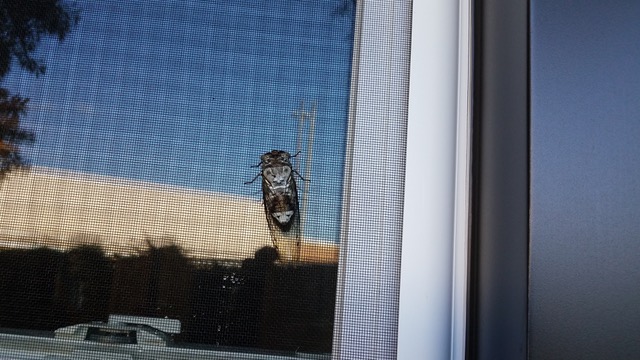The cicadas are coming. The cicadas are coming. By now you’ve probably heard it a million times. And if you haven’t already begun to see Brood X cicadas emerge from holes in the ground after their 17-year-slumber, it’s just a matter of time. Tree branches and bushes of all kinds will be laden with these critters on a mission to find a mate.
Here’s what you can do to help fortify your home and yard against what’s sure to be billions, if not trillions, of these red-eyed bugs that occupy the District of Columbia, and parts of 15 states—including ours.
Fix Any Holes Around Your House
If you’ve got holes in the screens of your doors, windows, porches, or pool caging, a cicada—or a few—can make their way inside. The good thing is they don’t bite. They don’t sting. They don’t carry diseases. And don’t worry about them breeding indoors and creating an infestation—they can’t breed while inside. They’re easy to pick up and put back outdoors. That is, if the prospect of touching them doesn’t give you a case of the creeps.
Brood X is the largest and most widespread brood in the nation, and is the only one found in Michigan—specifically around Ann Arbor, according to expert entomologists at Michigan State University. Sorry for the inconvenience, Ann Arbor residents. Or, not sorry—depending on whether you consider these insects to be a nuisance, or an intriguing phenomenon.
If you want to steer clear of any unwanted indoor encounters with these beady-eyed bugs it’s best to patch screen tears and openings. You can grab a screen repair kit from your local hardware store. You’ll help keep out cicadas, and other insects as well.
Prune Your Trees and Shrubs to Reduce Cicada Activity
Yes, you can prune trees in the spring.
Cicadas are attracted to trees for reproductive purposes. After they mate, female cicadas lay eggs inside slender tree stems, twigs, and shrubs. Tiny “nymphs” hatch, fall to the ground, and burrow into the soil where they remain for the next 13 to 17 years.
To make your trees and shrubs less accommodating for these critters give them a light pruning and trimming. You’ll help keep the cicadas, and other insects, away. It’s also a great opportunity to remove any dead or dying portions of trees that could present a threat to your home during severe weather.









